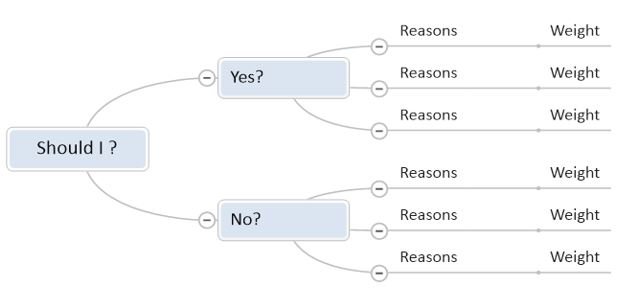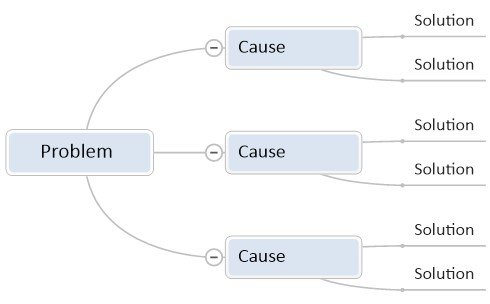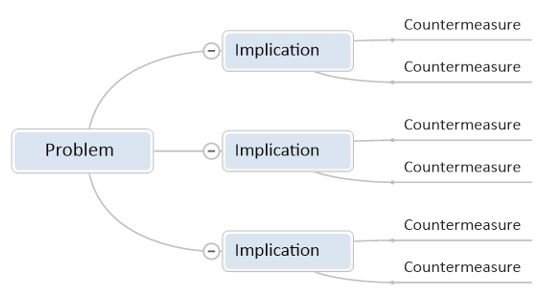How to Make a Good Decision
How to make a good decision
The Quality of our lives is determined by the quality of our decisions.
Decisions. Decisions!
We make decisions every hour of every day. Many decisions are trivial, such as what to eat for lunch, but even these seemingly trivial decisions have a cumulative effect. Other decisions are major, and they have enormous, long term consequences for ourselves and others.
People's lifetime earnings are determined by their ability to make right decisions. People are paid, NOT in proportion to how hard they work, but rather, in proportion to the value of the decisions their organisation will entrust them to make.
Therefore, decision making is one of the most important skills to develop. Here is some guidance on how to make decisions.
1. Yes or No?
2. Which one, What kind? Decisions
3. What is the priority order? Decisions
4. What is the best sequence? Decisions.
5. Problem-cause-solution Decisions.
6. Problem, implication and countermeasure Decisions.
First rule. Make the decision.
Don't procrastinate unnecessarily.
Here is the truth: You must make decisions even in the face of uncertain and incomplete knowledge.
So, the rule to remember is this: After a logical analysis of all the available evidence: Make the decision!
Don't make decisions based upon your first, instinctive, emotional reaction to an event.
Neither should you make a decision based upon any prejudices, nor based upon guesses or fears.
Make your decisions based upon a logical evaluation of all the available evidence in relation to how they affect the achievement of your goal.
In order to think things through logically, use decision matrices. Decision matrices are a great way to make your decisions in a logical way, in writing.
1. Yes or No? Decisions.
You need to make Yes/No decisions all the time.
For example, should you get one, or not?
Should you say it, or not?
should you go on holiday or not?
Should you ask her, or not?
You can handle a yes/no decision by using the following diagram, or try our free Yes/No Decision Making app.

2. Which one, What kind? Decisions
If you are going to get a computer, then which one, what kind?
If you are going on holiday, then which one, what kind?
If you are going to buy a dog, then, which one, what kind?
To help you make this type of decision, try using our Which One, What Kind? Decision making widget.
3. What is the priority order? Decisions
You often need to decide between options, which one is the most valuable?
What is the most valuable use of your time?
What is the most valuable use of your energy?
What is the most valuable use of your effort?
To make a priority order decision, you may find our Job Priority app useful.
4. What is the correct logical sequence? Decisions.
Assume that there is an ideal, most efficient order of steps that will achieve a goal in the most effective manner possible. Ask yourself
What is most efficient order that would achieve the goal in least time and effort?
5. Problem-cause-solution Decisions.
All problems have causes. Most problems have multiple causes.
Name the problem, name the three or four major causes to the problem.
Then assume that each cause suggests a solution.
If you stop the cause, you'll stop the problem.
For example, the three causes of fire are: Heat, oxygen and fuel. If you have enough heat, oxygen and fuel in the same place, then you will have a fire.
If you remove any one of the three causes, then the fire will be extinguished.
Assume the same cause / effect principle applies to all problems.

6. Problem, implication and countermeasure Decisions
All problems may be the cause of additional problems. For example, if you have lost your wallet, then that is a problem.
But having lost your wallet may cause you a number of additional problems, such as credit-card fraud, or not being able to hire a car because your driving licence was in your wallet.
All problems can be the cause of other problems, which need to be anticipated and a set of countermeasures put in place.
Think it through, using this diagram to help you:

Blogs by Email
Do you want to receive an email whenever we post a new blog? The blogs contain article 5-10 minutes long - ideal for reading during your coffee break!
Further Reading in Decision Making and Problem Solving
-
When and How to Use the Five Whys Technique
Discovering the root cause of a problem is vital to finding a satisfactory solution. The 5 Whys Technique is a method of problem solving based on asking "Why?" five times. Corporate Coach Group have an improved version of the 5 Whys Technique.
Read Article > -
Be a Straight Thinker
Being able to think straight is an asset in life. We know this means making rational decisions, but what exactly does that mean in reality? You need to learn to be a critical thinker and here are four things to remember to get your thinking straight.
Read Article > -
Black and White Thinking
Right or wrong? Real life problems are often too complex to apply black and white thinking to. Instead, try using another concept, the Law of Identity, on which to base your analysis and decision making.
Read Article > -
10 Steps to Solving Problems at Work
Problem solving is an essential skill, not only at work, but in personal situations. Use these ten steps to improve your problem-solving skills. Learn how to identify the circumstances around the problem and the logical steps to take.
Read Article > -
The Single Most Important Thing
Be the best by learning how to pick out the single most important thing, in any situation or conversation.
Read Article >
Looking for Leadership and Management Training?
If you're looking to develop your Decision Making and Problem Solving Skills, you may find this Leadership and Management Training Course beneficial:
Open Training Course Pricing and Availability
Next Open Course Starts in 3 days, Gloucester (M5 J11), places available




